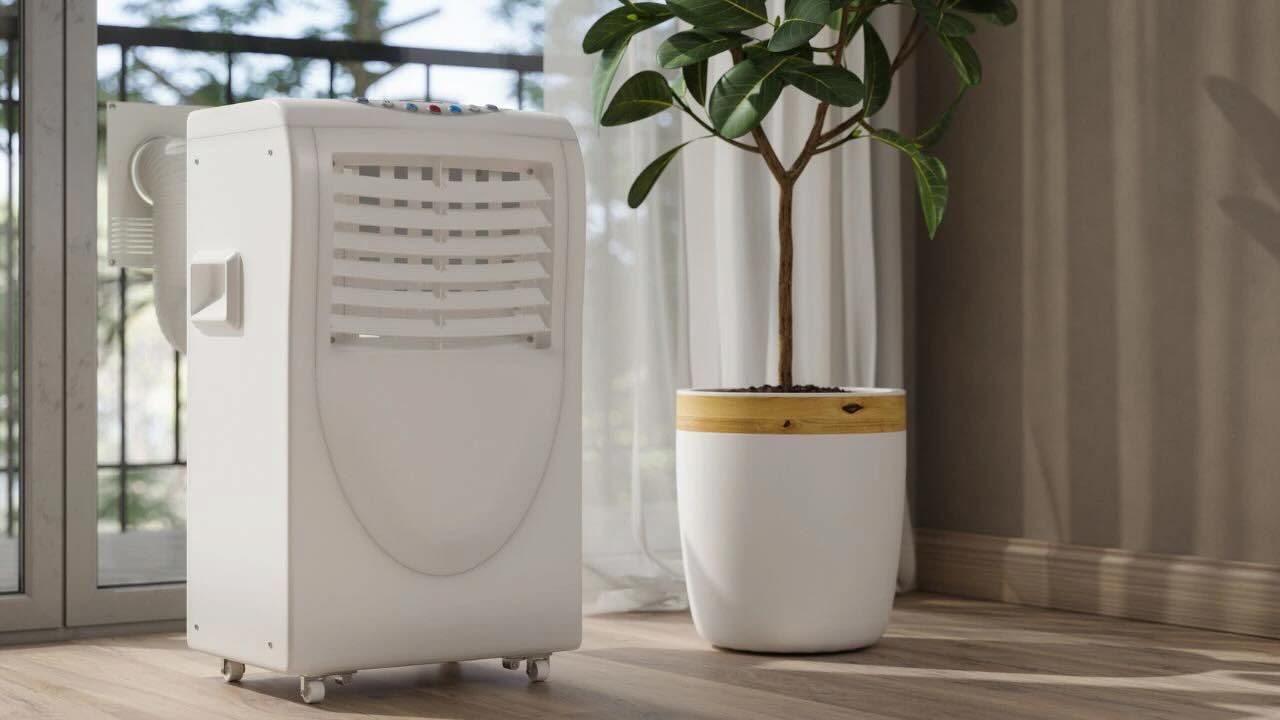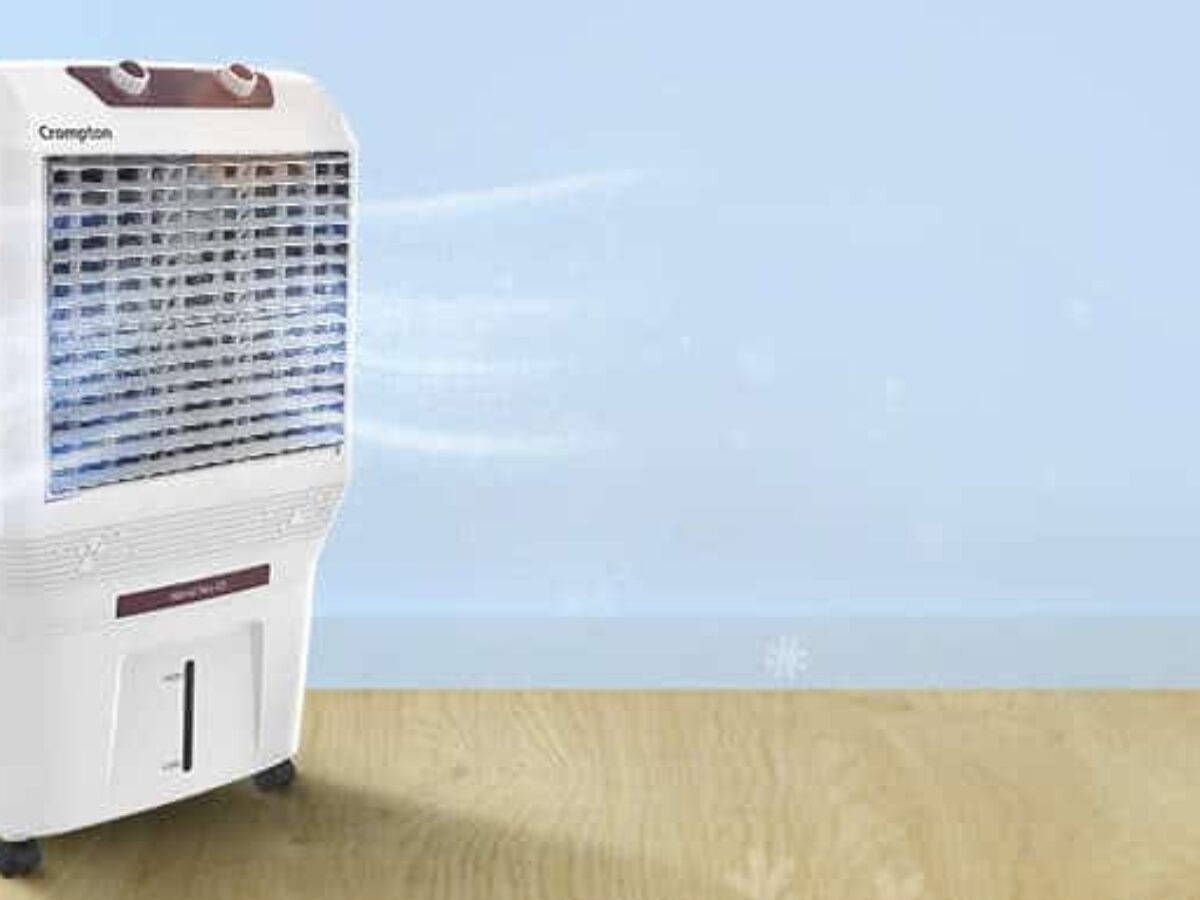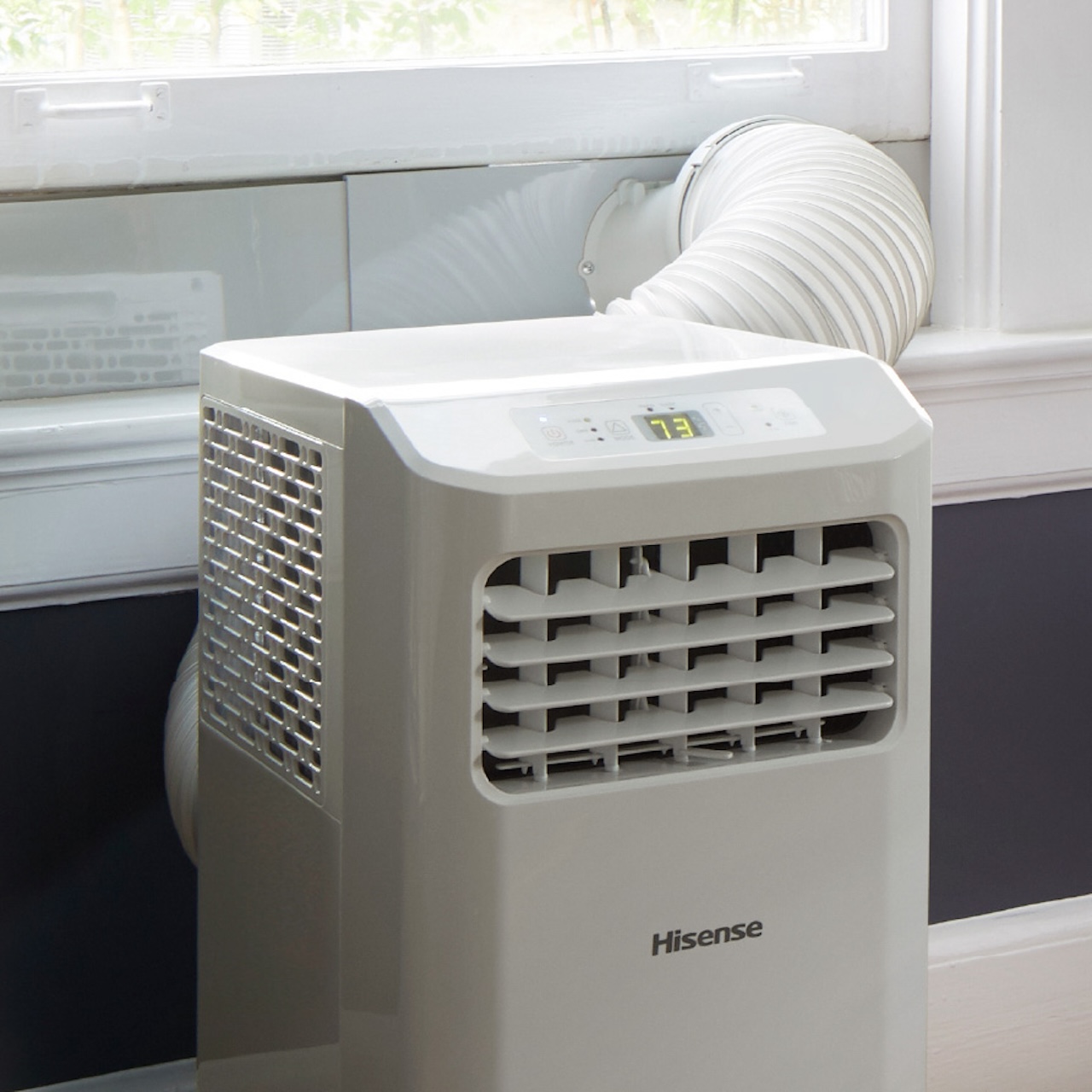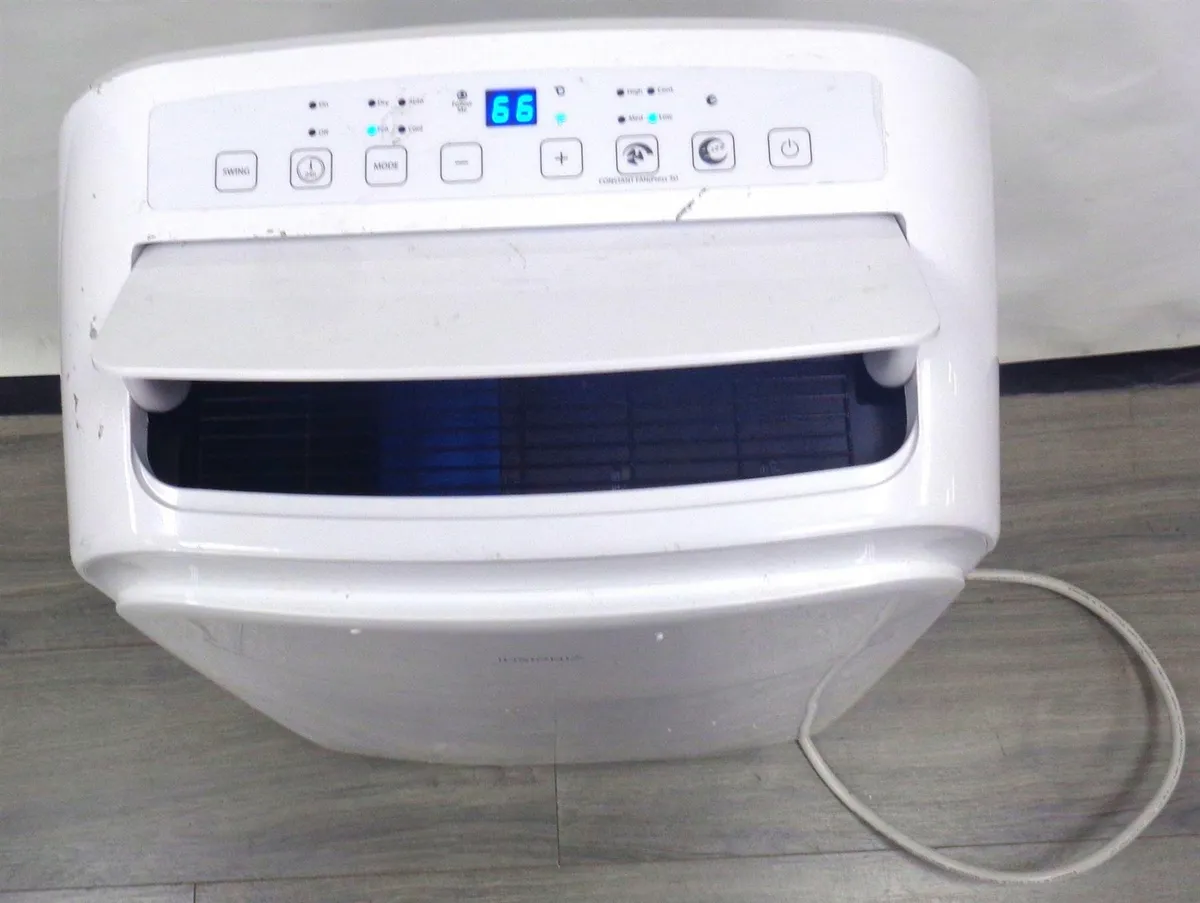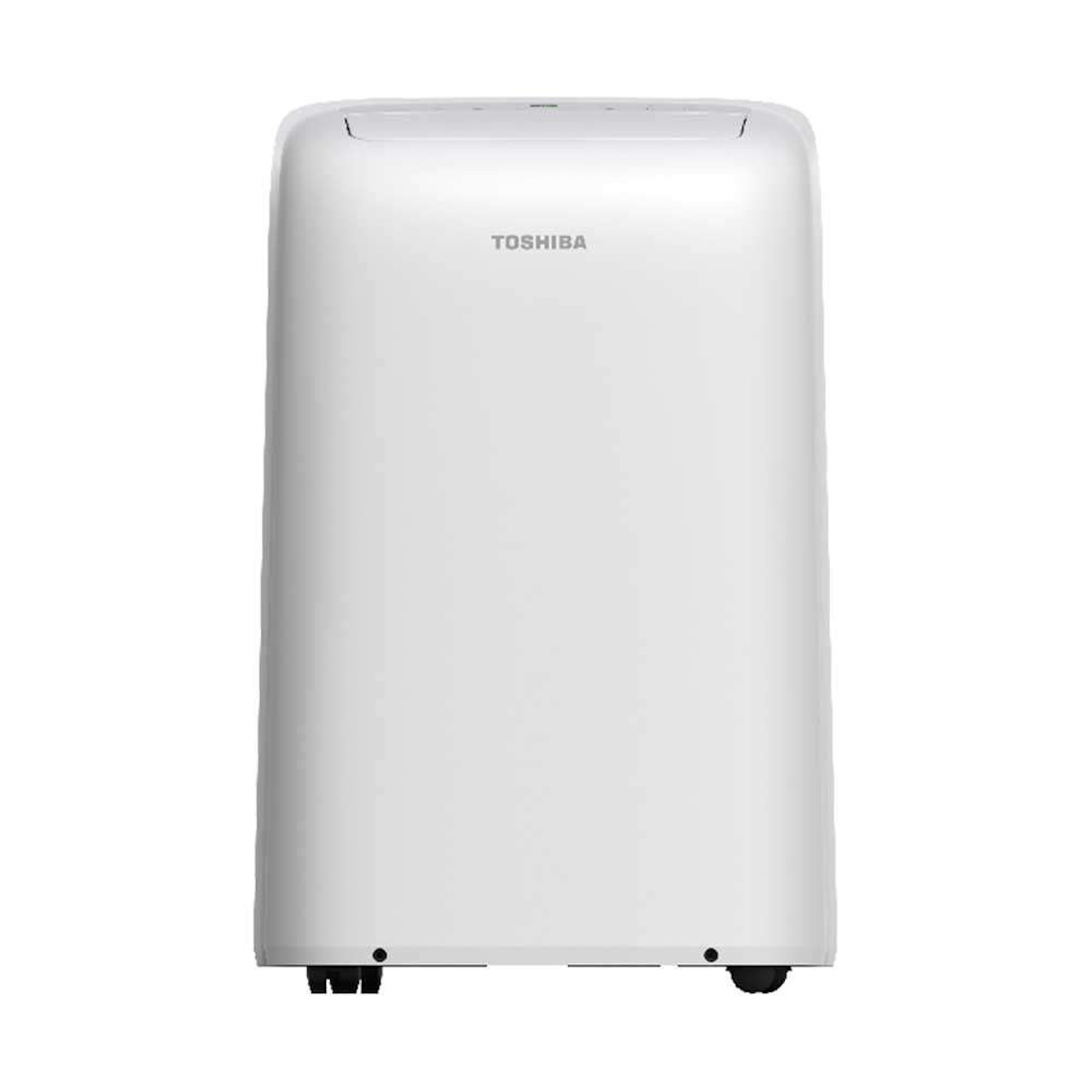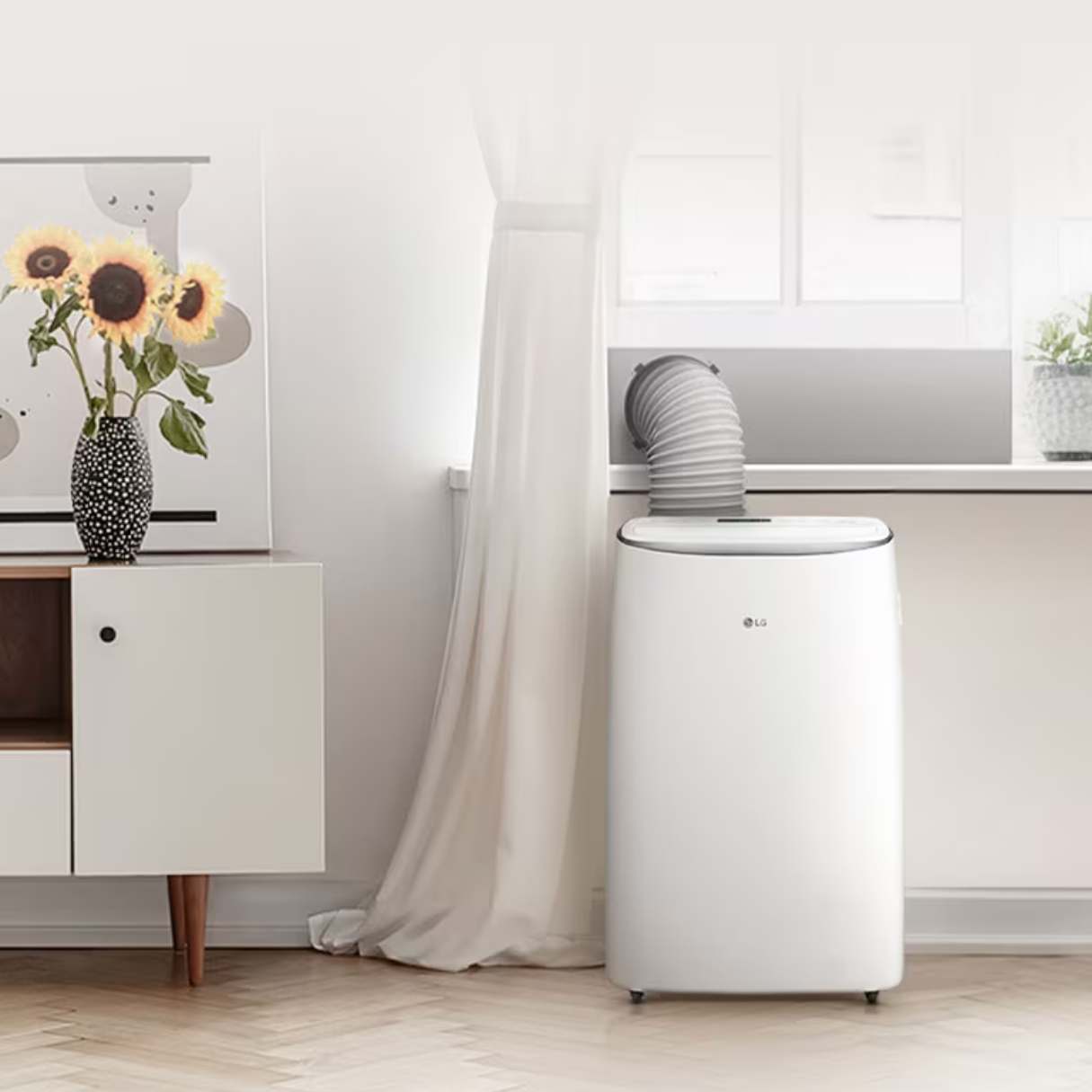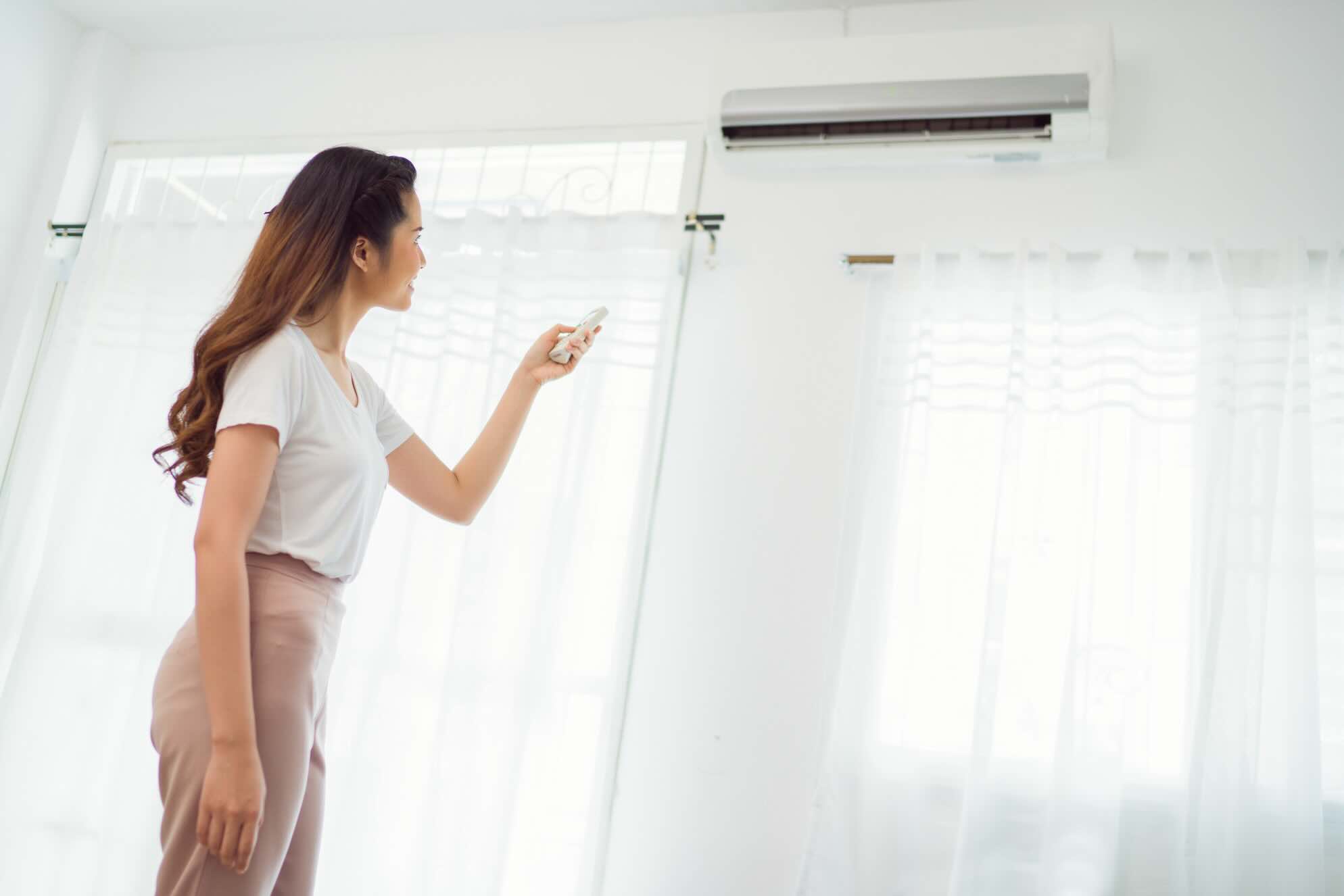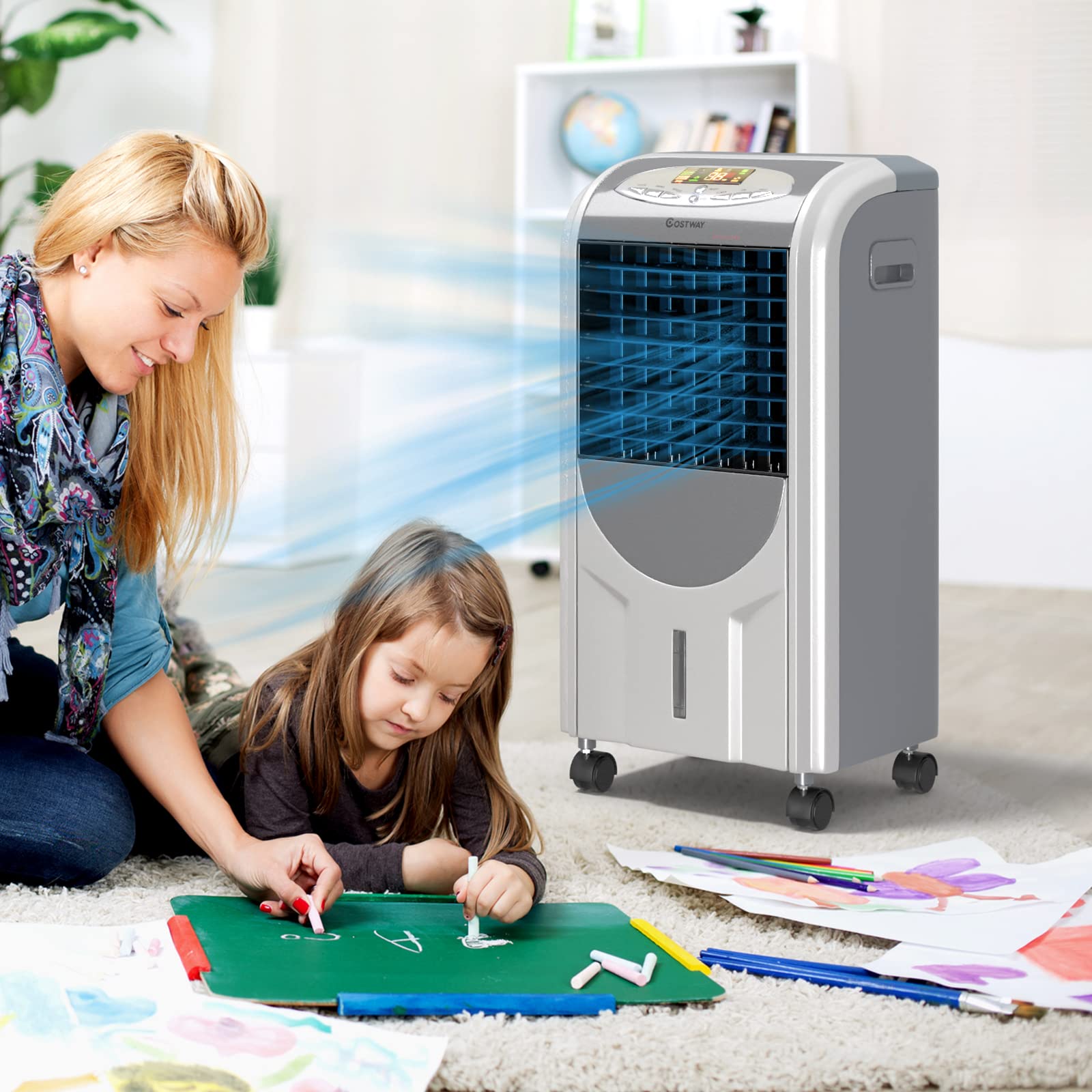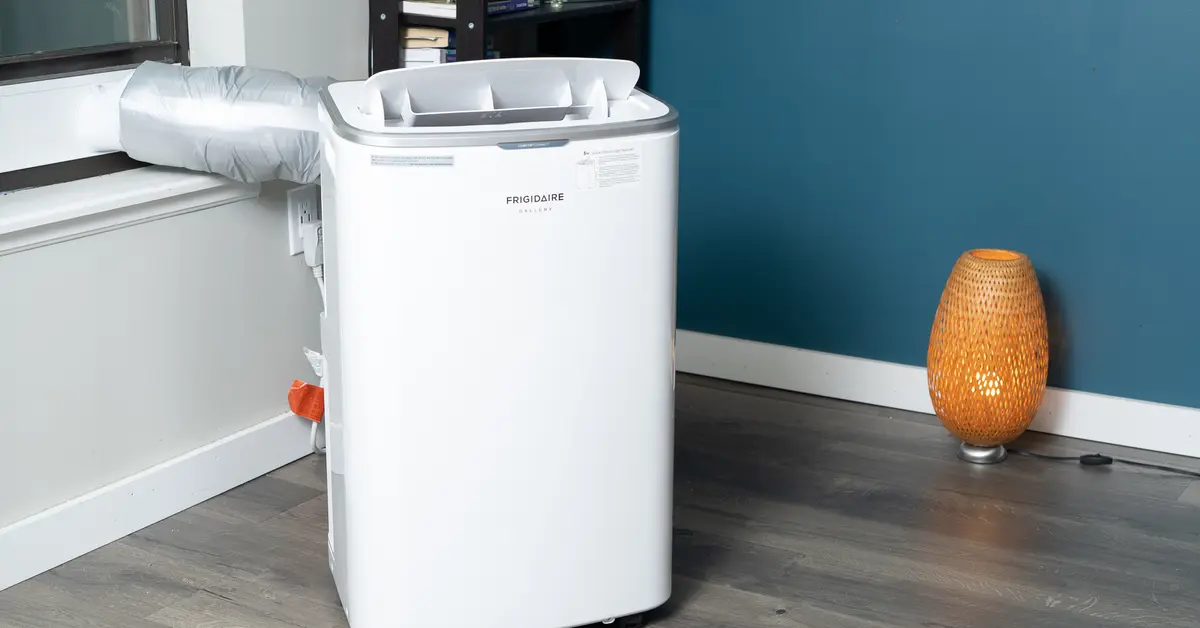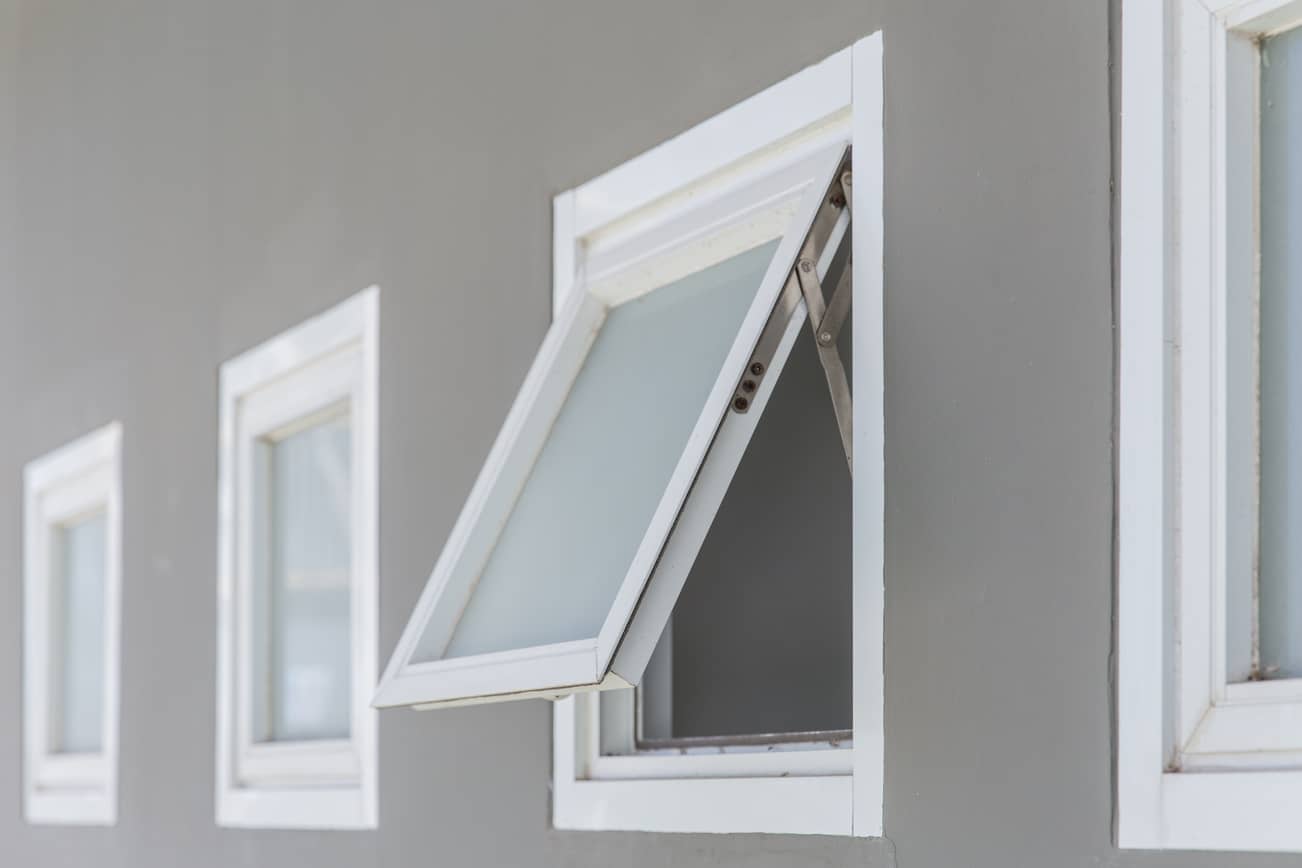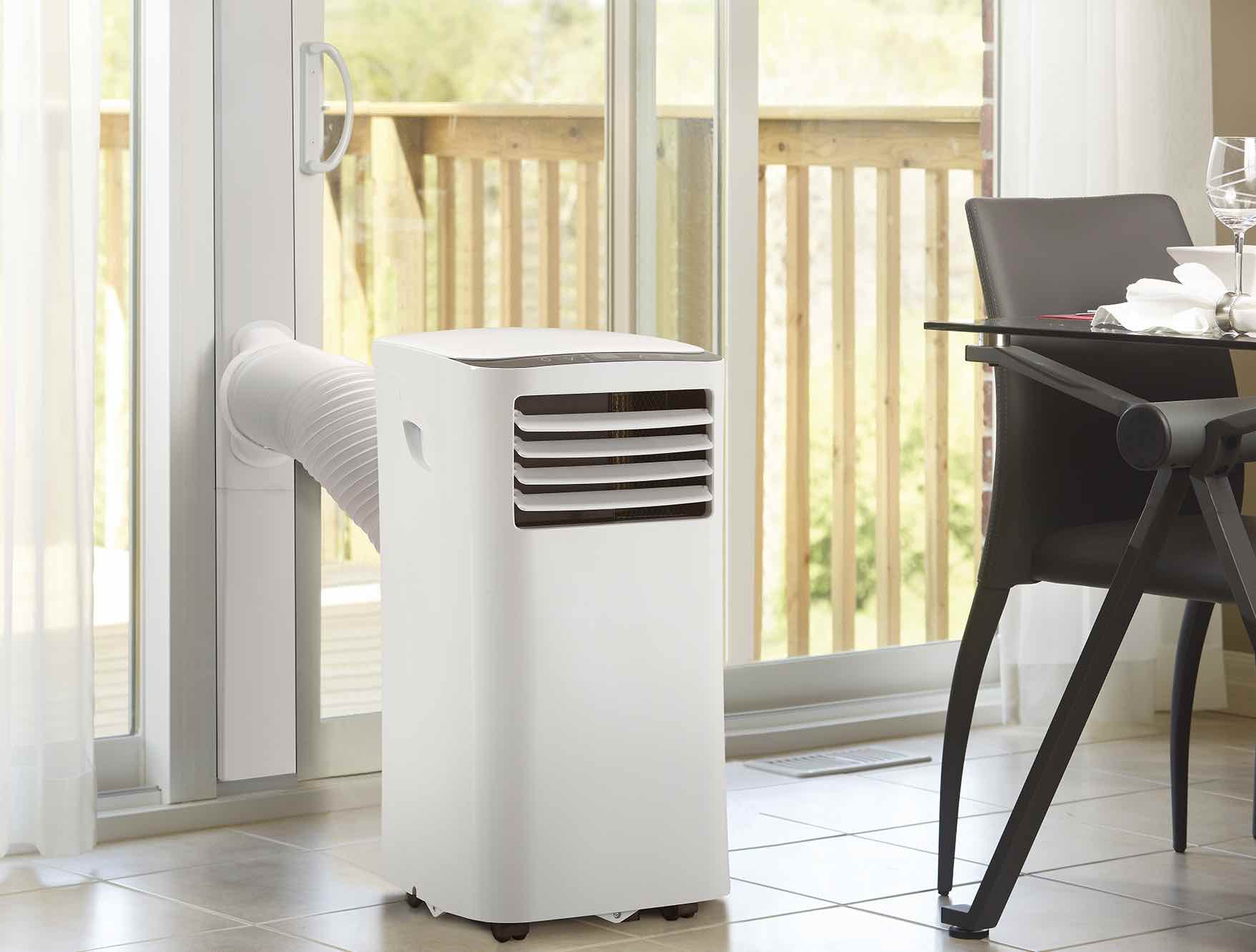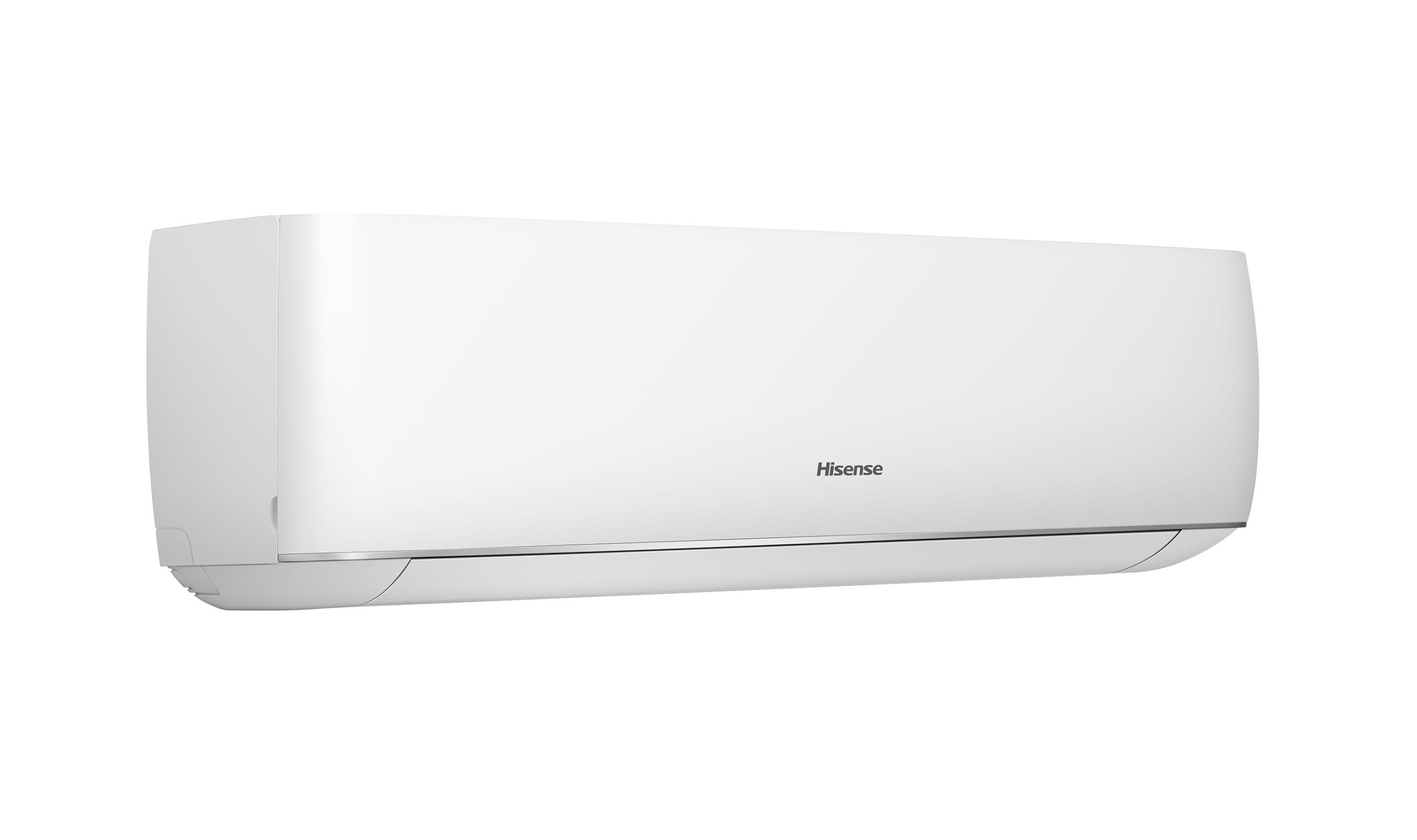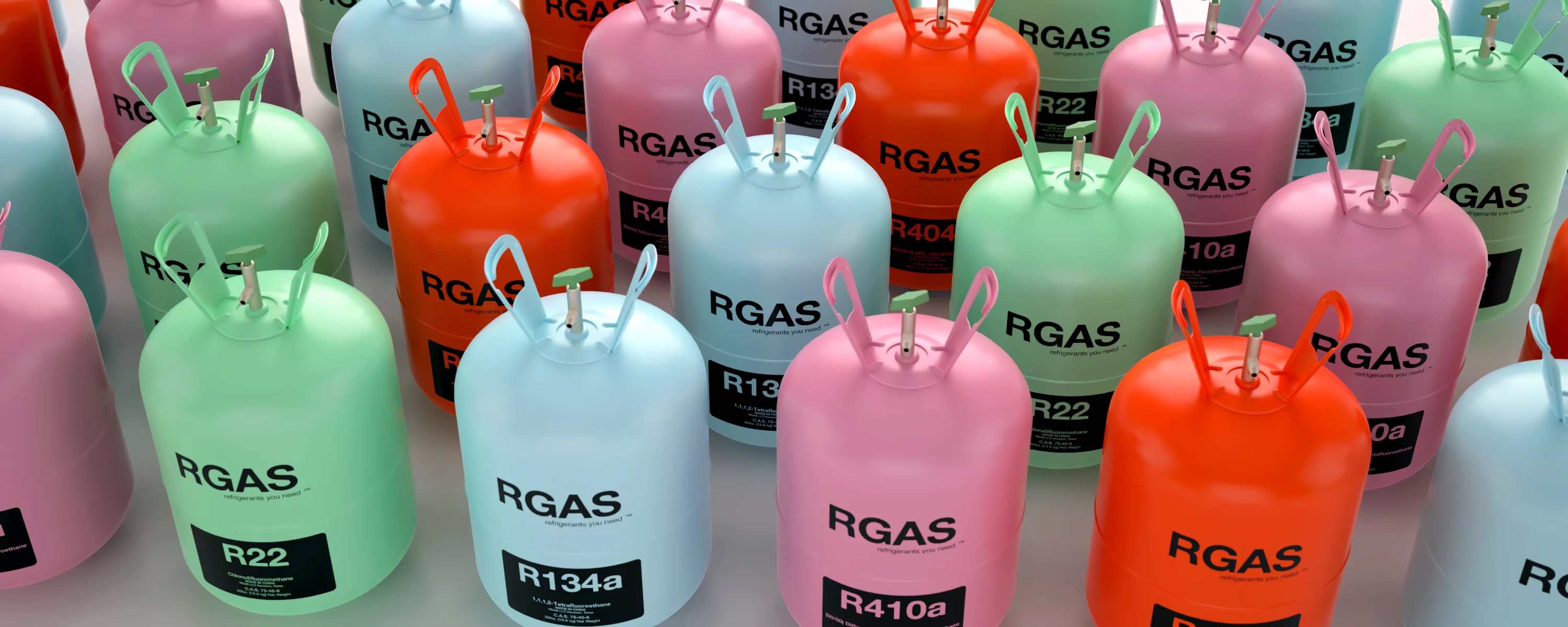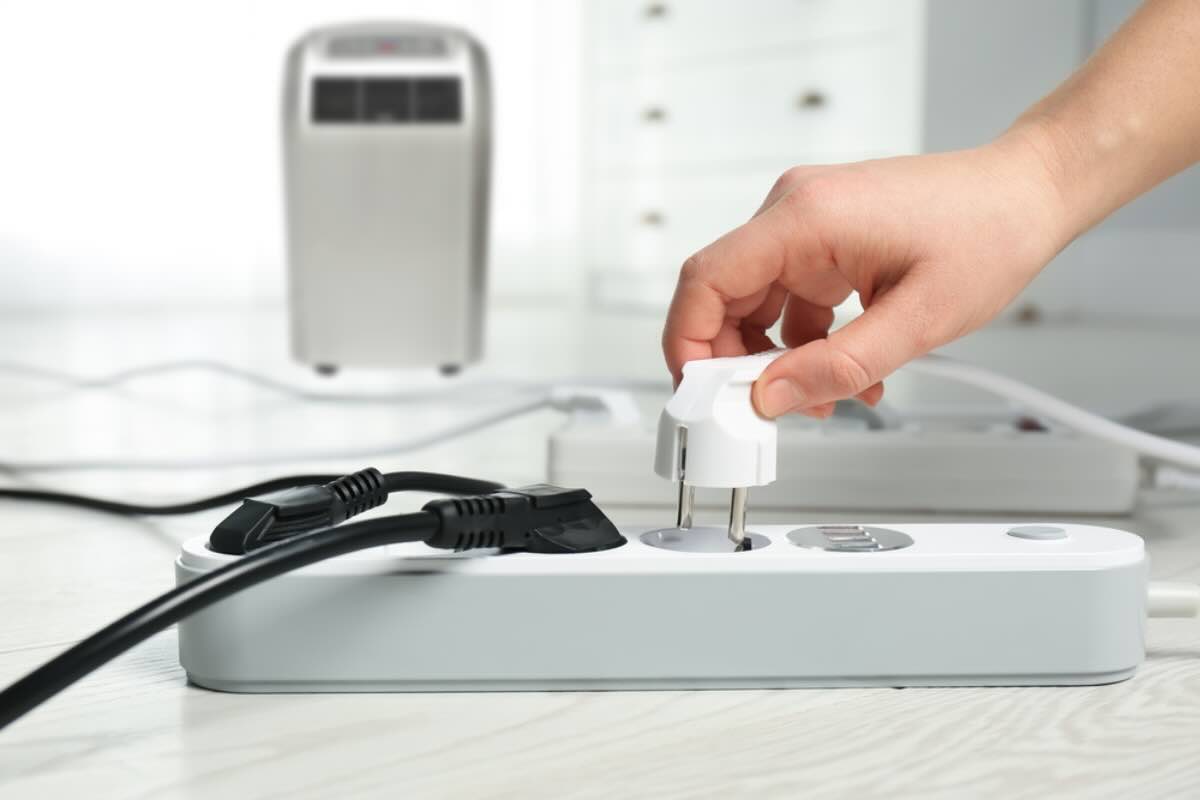Home>Home Maintenance>How To Use A Portable Air Conditioner
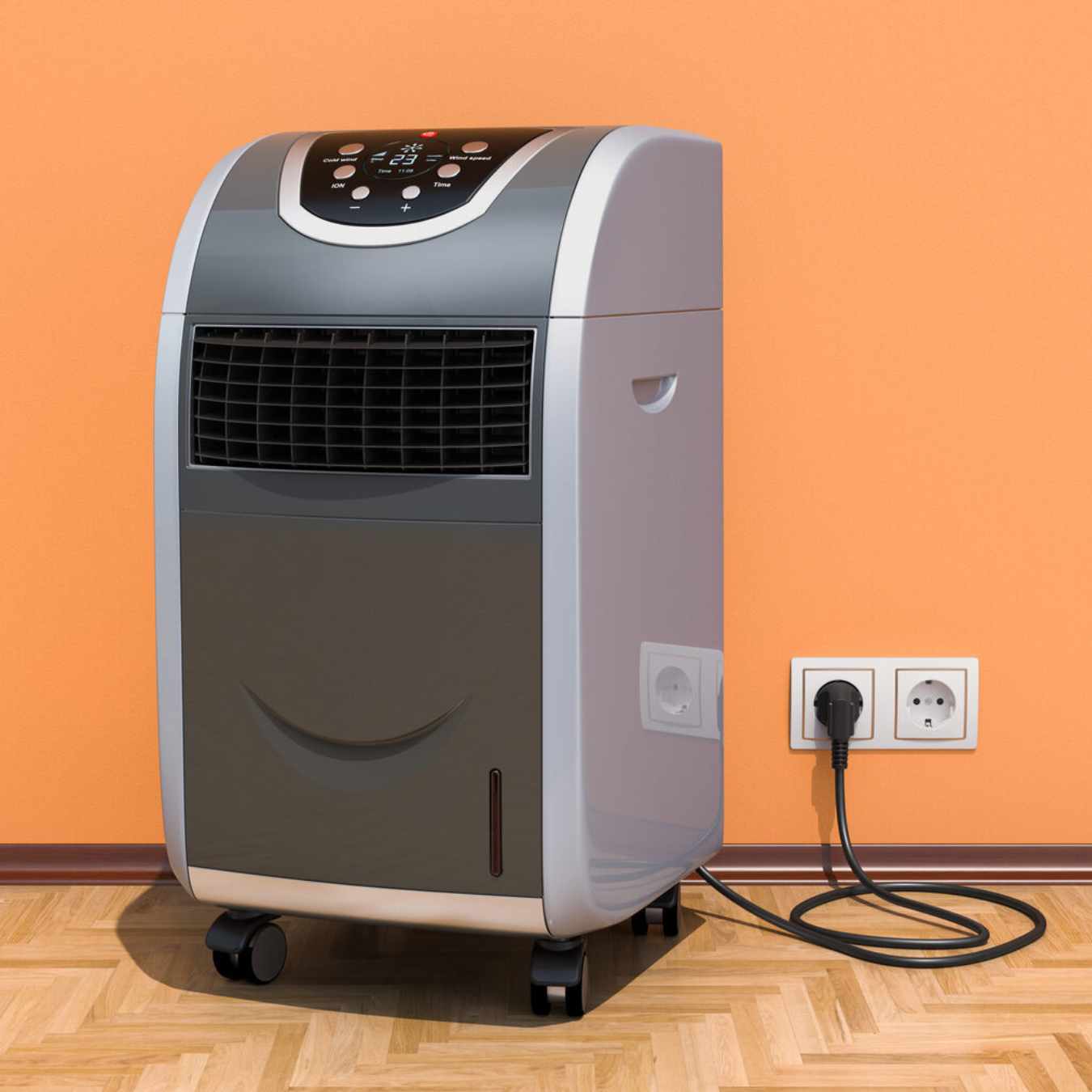

Home Maintenance
How To Use A Portable Air Conditioner
Modified: March 7, 2024
Learn how to effectively use a portable air conditioner for your home maintenance needs. Beat the heat and stay cool with this essential guide
(Many of the links in this article redirect to a specific reviewed product. Your purchase of these products through affiliate links helps to generate commission for Storables.com, at no extra cost. Learn more)
Introduction
Welcome to our comprehensive guide on how to use a portable air conditioner! Keeping your home cool and comfortable during hot summer days is essential for your well-being. A portable air conditioner is a convenient and efficient way to bring relief to any room in your home without the need for costly installation or permanent fixtures.
In this article, we will walk you through the process of understanding, choosing, setting up, operating, and maintaining a portable air conditioner. By the end of this guide, you will have all the knowledge and confidence necessary to make the most of this versatile home cooling appliance.
Understanding how a portable air conditioner works is the first step towards harnessing its cooling power. Unlike traditional air conditioners that have a fixed installation, portable air conditioners can be moved and used in multiple locations. They work by extracting warm air from the room, cooling it, and then blowing the cooled air back into the room.
When it comes to choosing the right portable air conditioner for your needs, there are a few factors to consider. The cooling capacity, measured in British Thermal Units (BTUs), determines how effectively the unit can cool a specific area. Additionally, factors such as room size, insulation, and the number of windows play a role in determining the appropriate BTU rating for your portable air conditioner.
Setting up your portable air conditioner correctly is crucial for optimal cooling performance. This involves finding a suitable location near a power outlet, adjusting the window venting kit to fit your window type, and ensuring a proper air seal to prevent warm air from entering the room.
Once your portable air conditioner is set up, operating and controlling it becomes a breeze. Familiarize yourself with the various modes, temperature settings, and fan speeds to create a comfortable indoor environment tailored to your preferences. Many portable air conditioners also come with programmable timers and remote controls for added convenience.
Maintenance and cleaning of your portable air conditioner are essential to ensure its longevity and performance. Regularly cleaning the air filters, clearing any blockages, and inspecting the condensate drain will help keep the unit running efficiently. We will provide you with step-by-step instructions on how to properly clean and maintain your portable air conditioner.
Finally, we will address common troubleshooting issues that you may encounter with your portable air conditioner. From unusual noises to issues with temperature control, we will guide you through the troubleshooting process to help you identify and resolve any problems.
Now that you have a general overview of what to expect from this guide, let’s dive into the specifics of each section. Get ready to beat the heat and enjoy the cool comforts of your portable air conditioner!
Key Takeaways:
- Stay Cool and Comfortable
Learn how to effectively use and maintain a portable air conditioner for a convenient and cost-effective way to keep your home cool during hot summer days. From setup to troubleshooting, you’ll be equipped with the knowledge to beat the heat! - Versatile and Efficient Cooling
Discover the versatility and mobility of portable air conditioners, along with essential tips for choosing the right unit, setting it up for optimal performance, and operating it with ease. Keep your space cool and comfortable without the hassle of permanent installations.
Read more: How To Install A Portable Air Conditioner
Understanding Portable Air Conditioners
Portable air conditioners are a popular choice for cooling smaller spaces, such as bedrooms, offices, or apartments, where traditional air conditioning systems may not be practical or feasible. These units are designed to be mobile and easy to install, offering flexibility in bringing cooling relief to various areas of your home.
Most portable air conditioners consist of three main components: a compressor, a condenser, and an evaporator. The compressor and condenser are located in the outdoor unit, while the evaporator is inside the unit. These components work together to cool the air and remove humidity from the room.
When the portable air conditioner is turned on, the compressor and condenser work to compress and cool the refrigerant gas. This process generates heat, which is then expelled through the outdoor unit. The cooled refrigerant is then circulated to the indoor unit, where it absorbs heat and moisture from the room’s air. The cooled air is circulated back into the room while the heat and moisture are expelled through the exhaust vent.
One of the key advantages of portable air conditioners is their versatility. Unlike window or central air conditioning systems, portable units can be moved from room to room as needed. This allows you to cool different areas of your home without the need for multiple units.
When selecting a portable air conditioner, it’s important to consider the cooling capacity, typically measured in British Thermal Units (BTUs). The cooling capacity determines the unit’s ability to cool a specific area. A higher BTU rating indicates a more powerful unit that can cool larger spaces. However, it’s crucial to choose the appropriate BTU rating for your room size to avoid inefficient cooling or excessive energy consumption.
Another important factor to consider is energy efficiency. Look for portable air conditioners that have an Energy Efficiency Ratio (EER) rating. Higher EER ratings indicate more efficient units that can provide optimal cooling while consuming less electricity. Energy-efficient models not only save on energy costs but also reduce environmental impact.
In terms of noise levels, portable air conditioners tend to produce some noise during operation. Look for units with lower decibel (dB) ratings if noise is a concern, especially if you plan to use the unit in bedrooms or quiet workspaces.
Understanding the basic functioning and features of portable air conditioners will help you make an informed decision when choosing the right unit for your needs. In the next section, we will discuss how to choose the ideal portable air conditioner based on your specific requirements and the characteristics of your space.
Choosing the Right Portable Air Conditioner
Choosing the right portable air conditioner is crucial to ensure that it effectively cools your space while providing energy efficiency and optimal performance. There are several factors to consider when selecting a unit that meets your specific needs.
The first consideration is the size of the room or area you intend to cool. Portable air conditioners are available in a range of cooling capacities, measured in British Thermal Units (BTUs). A general rule of thumb is to choose a unit with a cooling capacity of around 20 BTUs per square foot of the room. For example, a 200-square-foot room would require a portable air conditioner with a cooling capacity of approximately 4,000 BTUs.
However, it’s important to note that other factors can affect the cooling requirements, such as room insulation, ceiling height, and the number of windows. If the room is heavily insulated or has high ceilings, you may need to choose a portable air conditioner with a slightly higher BTU rating to compensate for these factors.
Another crucial consideration is energy efficiency. Look for portable air conditioners with a high Energy Efficiency Ratio (EER). The EER indicates the unit’s cooling efficiency by comparing the cooling capacity (in BTUs) to the power consumption (in watts). A higher EER rating means the unit provides more cooling power while consuming less energy. Energy-efficient models not only save on electricity costs but also have a lower environmental impact.
Next, consider the portability and mobility features of the unit. Look for portable air conditioners with smooth-rolling casters, as they make it easier to move the unit from one room to another. Additionally, check the weight and dimensions of the unit to ensure it can fit through doorways and navigate narrow spaces if needed.
Noise level is another important factor to consider, especially if you plan to use the portable air conditioner in a bedroom, office, or any quiet space. Look for units with lower decibel (dB) ratings, as they produce less noise during operation. However, keep in mind that while noise levels are important, they should not compromise the cooling performance of the unit.
Additional features to consider include programmable timers, remote controls, and adjustable fan speeds. These features can enhance convenience and customization, allowing you to set specific cooling schedules and control the airflow according to your preferences.
Price is also a consideration when choosing a portable air conditioner. Set a budget and compare different models within that range. Keep in mind that higher-priced units may offer advanced features, better energy efficiency, and longer warranties.
Lastly, do your research and read customer reviews before making a final decision. Hearing from real users can provide valuable insights into the performance, durability, and overall satisfaction of a particular model.
By considering these factors, you can narrow down your options and choose the right portable air conditioner that suits your cooling needs and provides the desired comfort level in your space. In the next section, we will guide you through the process of setting up your portable air conditioner for optimal cooling performance.
Setting Up Your Portable Air Conditioner
Setting up your portable air conditioner correctly is essential to maximize its cooling efficiency and ensure optimal performance. Follow these steps to set up your portable air conditioner:
- Choose the right location: Select a suitable location for your portable air conditioner near a power outlet. It should also be close to a window for proper venting.
- Prepare the window: Most portable air conditioners come with a window venting kit. Adjust the kit according to the size and type of window. The kit should create a secure seal to prevent warm air from entering the room.
- Install the exhaust hose: Attach one end of the exhaust hose to the back of the portable air conditioner and the other end to the designated opening in the window venting kit. Ensure a tight connection to prevent leaks.
- Secure the venting kit: Once the exhaust hose is properly installed, secure the venting kit in the open window. Use the provided brackets or accessories to hold the kit firmly in place. Make sure there are no gaps or openings around the kit.
- Extend the hose if necessary: If the distance between the portable air conditioner and the window is more than the length of the exhaust hose, you may need to use an extension hose. Follow the manufacturer’s instructions for attaching and sealing the extension hose.
- Seal any gaps: Check for any gaps or openings in the window or venting kit. Use weatherstripping or draft blockers to seal these gaps to prevent warm air from entering the room and affecting the cooling efficiency.
- Plug in and test: Once the venting kit is securely in place, plug the portable air conditioner into a grounded power outlet. Turn on the unit and adjust the settings to your desired temperature and fan speed. Test the unit to ensure it is cooling properly.
It’s important to note that portable air conditioners require proper ventilation for optimal cooling performance. The exhaust hose removes hot air and moisture from the room, so it is essential to vent it outside through a window or another appropriate opening. Avoid venting the exhaust hose into an attic, crawl space, or enclosed area, as this can lead to heat buildup and potential damage.
Furthermore, ensure that the portable air conditioner is placed on a level surface and that there is sufficient clearance around the unit for proper airflow. Placing it near furniture or obstructing the air vents can restrict airflow and reduce cooling efficiency.
By following these steps and considering the ventilation requirements, you can set up your portable air conditioner properly, allowing it to provide efficient and effective cooling for your space. In the next section, we will explore how to operate and control your portable air conditioner.
Make sure to properly vent the exhaust hose out of a window or door to allow the hot air to escape. This will help the portable air conditioner work more efficiently.
Operating and Controlling Your Portable Air Conditioner
Operating and controlling your portable air conditioner effectively allows you to create a comfortable indoor environment tailored to your needs. Here are some key steps to follow:
- Understanding the control panel: Familiarize yourself with the control panel on your portable air conditioner. It typically includes buttons or a digital display for adjusting temperature, selecting modes, and controlling fan speed.
- Selecting the mode: Most portable air conditioners offer different modes, including cool, fan-only, and dehumidify. In cool mode, the unit will cool the air and reduce humidity. Fan-only mode circulates air without cooling, while dehumidify mode focuses on removing excess moisture from the room.
- Adjusting the temperature: Use the temperature controls to set the desired cooling level. Experiment with different settings to find the temperature that provides the most comfortable environment for you.
- Selecting fan speed: Portable air conditioners usually have multiple fan speeds, such as low, medium, and high. Adjust the fan speed based on your preference and cooling needs. Higher fan speeds can provide more rapid cooling, but they may also generate more noise.
- Using the timer function: Many portable air conditioners come with programmable timers. Utilize this feature to schedule when the unit turns on or off, allowing you to save energy and ensure a cool space upon your return.
- Using the remote control: If your portable air conditioner comes with a remote control, take advantage of its convenience. The remote allows you to adjust settings from a distance without having to approach the unit directly.
- Avoiding temperature extremes: While it can be tempting to set your portable air conditioner to the coldest temperature, it is not advisable. Extreme temperature differences between the indoor and outdoor environments can strain the unit and increase energy usage. Aim for a comfortable temperature rather than an excessively cold one.
Additionally, it’s important to keep doors and windows closed while the portable air conditioner is operating. This will prevent warm air from entering the room and ensure optimal cooling efficiency.
Remember that each portable air conditioner may have slight variations in operation and control options. Refer to the manufacturer’s manual for specific instructions and guidance tailored to your unit.
By understanding and utilizing the various operating and control features of your portable air conditioner, you can create a cool and comfortable environment that suits your preferences. In the next section, we will discuss the maintenance and cleaning tasks necessary to keep your portable air conditioner running smoothly.
Read more: How To Make A Portable Air Conditioner
Maintenance and Cleaning of Your Portable Air Conditioner
Maintaining and cleaning your portable air conditioner is essential for optimal performance and longevity. Regular maintenance tasks will ensure that the unit continues to provide efficient and effective cooling. Follow these steps to properly maintain and clean your portable air conditioner:
- Turn off and unplug the unit: Before starting any maintenance tasks, always turn off the portable air conditioner and unplug it from the power source. This will ensure your safety during the cleaning process.
- Clean the air filters: The air filters in your portable air conditioner play a crucial role in trapping dust, dirt, and other particles from the air. Over time, these filters can become dirty and clogged, hindering airflow and reducing cooling efficiency. Remove the filters according to the manufacturer’s instructions and clean them with warm, soapy water. Allow the filters to dry completely before reattaching them.
- Clean the exterior surfaces: Wipe the exterior surfaces of the unit using a soft cloth dampened with mild detergent and water. Avoid using harsh chemicals or abrasive cleaners, as they can damage the unit’s finish. Gently wipe away any dirt, dust, or grime from the surfaces, including the control panel and vents.
- Clean the condensate drain: The condensate drain in your portable air conditioner removes the moisture collected during the cooling process. Over time, this drain can become clogged with dirt and debris, leading to inefficient draining and potential water leaks. Locate the condensate drain and use a small brush or pipe cleaner to remove any obstructions and ensure proper drainage.
- Check the exhaust hose and venting kit: Inspect the exhaust hose and venting kit for any blockages or obstructions. Clear away any debris or dust that may have accumulated. Ensure that the venting kit and hose are properly connected and securely fitted to avoid air leaks.
- Inspect the power cord: Check the power cord for any signs of damage or wear. If you notice any frayed wires or exposed insulation, it is important to replace the cord to prevent electrical hazards.
- Keep the area around the unit clean: Regularly vacuum or sweep the area surrounding the portable air conditioner to remove dust and debris. Clearing the surrounding space will help maintain proper airflow and prevent the accumulation of dirt that can affect the unit’s performance.
It is recommended to perform these maintenance tasks at least once every month or as directed by the manufacturer. Regular cleaning and maintenance will not only improve the performance and efficiency of your portable air conditioner but also help maintain cleaner indoor air quality.
If you notice any unusual noises, odors, or performance issues with your portable air conditioner, refer to the manufacturer’s manual for troubleshooting tips or contact a professional for assistance.
By incorporating these maintenance and cleaning tasks into your routine, you can ensure that your portable air conditioner operates at its best, delivering reliable and efficient cooling when you need it most. In the next section, we will address common troubleshooting issues with portable air conditioners and provide solutions to resolve them.
Troubleshooting Common Issues with Portable Air Conditioners
While portable air conditioners are generally reliable, occasional issues may arise. Fortunately, many common problems can be resolved with simple troubleshooting techniques. Here are some common issues you may encounter with your portable air conditioner and their possible solutions:
- Poor cooling performance: If your portable air conditioner is not cooling adequately, first check that the unit is properly sized for the room. Ensure that all windows and doors are closed tightly to prevent warm air from entering. Clean or replace the air filters, as dirty filters can restrict airflow. Remove any obstructions around the unit that may be blocking airflow. If the issue persists, consult the manufacturer’s manual or contact customer support for further assistance.
- Water leakage: Water leakage can occur if the condensate drain is clogged or if the unit is not properly leveled. Check the condensate drain and remove any blockages. Ensure that the portable air conditioner is positioned on a level surface. If the problem persists, contact a professional for further evaluation and repair.
- Unusual noises: If you hear unusual noises coming from your portable air conditioner, such as clanging or rattling, it may indicate loose or broken parts. Turn off the unit and inspect the fan blades, motor, and other components for any damage. Tighten any loose screws or bolts. If the noise persists, contact a professional for further inspection and repair.
- Excessive condensation: Excessive condensation can occur if the room is highly humid or if the unit is not properly ventilated. Check the exhaust hose and venting kit for any blockages that may be inhibiting proper airflow. Use a dehumidifier in the room to reduce humidity levels. If the issue continues, consult the manufacturer’s manual or contact customer support for guidance.
- Unit not turning on: If your portable air conditioner does not turn on, check the power source to ensure it is functioning correctly. Verify that the power cord is securely plugged into an outlet. Check the circuit breaker or fuse box for any tripped breakers or blown fuses. If the issue persists, contact a professional for further inspection and repair.
It is important to remember that troubleshooting techniques may vary depending on the specific make and model of your portable air conditioner. Always refer to the manufacturer’s manual for model-specific troubleshooting tips and instructions.
If you are unable to resolve the issue on your own or if the problem appears to be more complex, it is recommended to seek professional assistance. Trained technicians have the expertise to diagnose and resolve more complicated issues to ensure the optimal performance of your portable air conditioner.
By understanding and addressing common troubleshooting issues, you can maintain the functionality and efficiency of your portable air conditioner, extending its lifespan and ensuring your continued comfort. In the next section, we will conclude our guide on using a portable air conditioner.
Conclusion
Congratulations! You are now equipped with the knowledge and understanding of how to effectively use and maintain a portable air conditioner. With the tips and guidance provided in this comprehensive guide, you can keep your home cool and comfortable during hot summer days without the need for costly and permanent installations.
We started by explaining the fundamentals of portable air conditioners, highlighting their versatility and mobility compared to traditional air conditioning systems. Understanding how they work and their cooling capacity helped you make an informed decision when choosing the right unit for your needs.
We then delved into the crucial steps of setting up your portable air conditioner, ensuring proper ventilation and airtight seals for optimal cooling performance. You learned about the importance of location, window preparation, and securing the venting kit to maximize the efficiency of your unit.
Operating and controlling your portable air conditioner became a breeze as you familiarized yourself with the various modes, temperature settings, and fan speeds. By utilizing programmable timers and remote controls, you gained the ability to customize your cooling experience for maximum comfort and convenience.
Regular maintenance and cleaning are vital for the longevity and performance of your portable air conditioner. Properly cleaning the air filters, checking the condensate drain, and keeping the unit and surrounding area free of debris will ensure that your unit operates efficiently and provides clean and cool air.
We also addressed common troubleshooting issues you may encounter, providing solutions for poor cooling performance, water leakage, unusual noises, excessive condensation, and unit failure. By following the troubleshooting steps and consulting the manufacturer’s manual or professionals when necessary, you can overcome these challenges and ensure the continued functionality of your portable air conditioner.
In conclusion, a portable air conditioner is a convenient and effective solution for cooling specific areas of your home. By understanding how to select the right unit, properly set it up, operate and control it, perform regular maintenance and cleaning, and troubleshoot common issues, you can make the most of your portable air conditioner and enjoy a cool and comfortable environment throughout the summer.
Remember to always refer to the manufacturer’s manual for specific instructions and consult professionals when needed. Now, embrace the convenience of your portable air conditioner and stay cool during those hot summer days!
Frequently Asked Questions about How To Use A Portable Air Conditioner
Was this page helpful?
At Storables.com, we guarantee accurate and reliable information. Our content, validated by Expert Board Contributors, is crafted following stringent Editorial Policies. We're committed to providing you with well-researched, expert-backed insights for all your informational needs.
